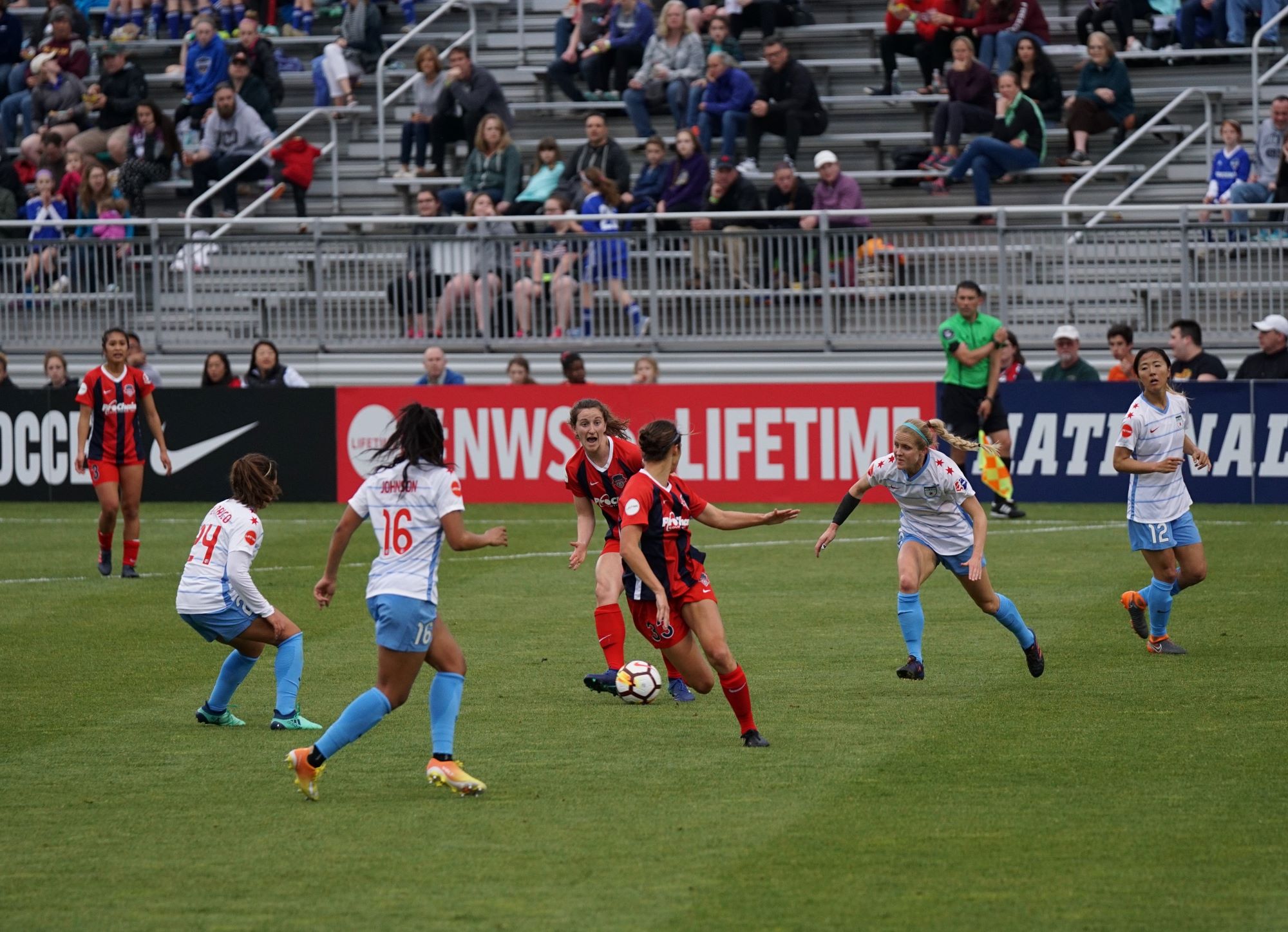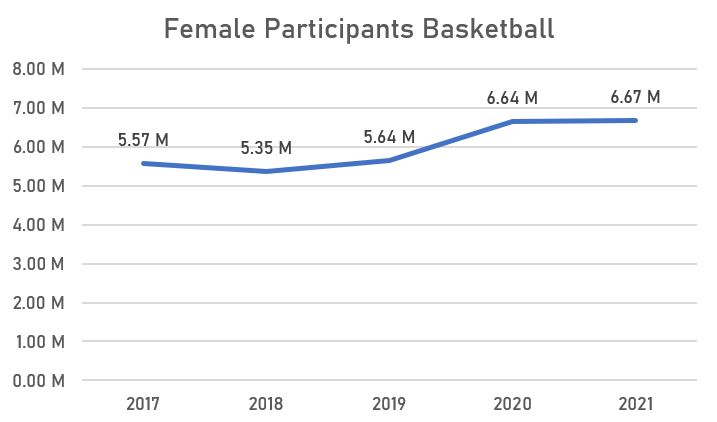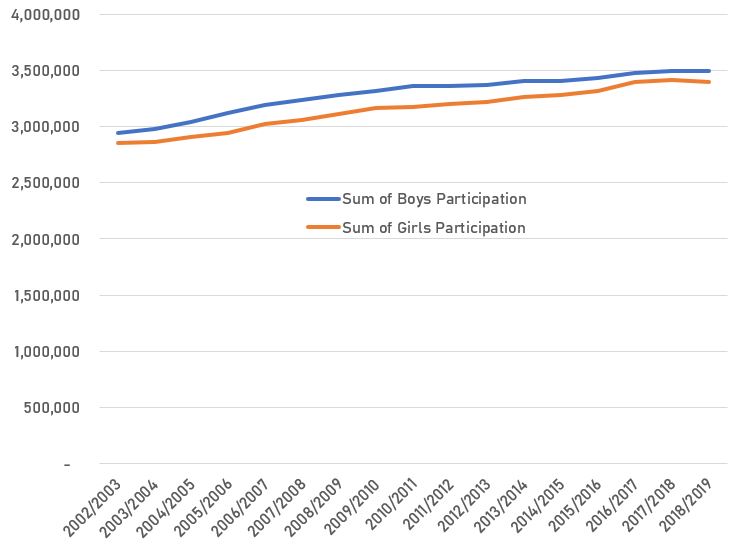Reports & Insights
Title IX : The biggest date in American Sport

Title IX : The biggest date in American Sport
Reports & Insights
The history of American sport is marked by seminal dates. In 1930 Bobby Jones won the calendar Grand Slam. In 1936, Jesse Owens quietened the Berlin Olympics with his four golds. In 1992, the Dream Team dominated in Barcelona and promoted the NBA to new heights.
Among all of those dates and achievements of the 20th century though, there is one that may be the most significant of all.
On June 23rd 1972, Title IX of the Education Amendments prohibited sex discrimination in any education program or activity receiving federal financial assistance. As of August 2021, that meant approximately 17,600 local school districts and more than 5,000 postsecondary institutions across all fifty states, the District of Columbia, and US territories. It may have come in the same year as Bobby Fischer’s victory over Boris Spassky, but if you had to choose the more enduringly important occasion, Title IX would win by checkmate in two.
For those in the know, Title IX needs no explaining. It is a transcendent moment not just in American law, but in American history. For those less familiar with the tale, it is one well worth relating.
America in 1972 was eight years on from the Civil Rights Act of 1964 and the parallel Title VI law which prohibited discrimination by race, color and national origin within federally funded private and public bodies. Staggering as it may be to 21st century ears, there was no mention of sex. It astonished many at the time too. Under pressure to make a correction, the Lyndon Johnson administration issued an executive order in 1967, but, with examples of discrimination still plaguing the higher education sector, it wasn’t until five years later that Title IX was born to enshrine the protections more closely.
It is one of the great ironies that despite not mentioning athletic endeavor explicitly, Title IX would become as much if not even more associated with sport than with any other area of education. That it did is partly due to a failed attempt in 1974 by Senator John Tower to exempt revenue producing sports from Title IX, a move that was rejected by a congress then nudged into action to codify sport into the act.
Title IX meant that if a schools or college wanted to offer a men’s team in a given sport, it either had to allow girls to play on the teams or it had to provide an equivalent program for girls to play.
And, despite some quibbling over what exactly equivalent meant – softball for example is considered an equivalent to baseball – its practical impact was huge, with ramifications sprawling into the present. At a stroke of a presidential pen, girls gained exposure to sports that had traditionally been men only. Women’s leagues like the WNBA may never have been born without the move. In 2021, viewing figures for the WNBA finals were 23% higher than the previous year and 42% up on 2019, with regular season coverage generating nearly 50% more interest than in 2020. As interest in the league rises, it is doing so at the same time as participation.

When Title IX was written into law only 7% of varsity athletes at high school level in America were female. Since Title IX, girls’ participation in school and college sport has skyrocketed, standing today at 49% if Tackle Football is excluded (Source NFHS)

To recognize the impact of Title IX is not to pretend that its implementation has always been seamless. While enshrining the right to play, there have always been those who pay lip service to the rule. All too often, then and now, girls’ teams have found themselves using sub-standard pitches and changing facilities, forced to travel further, given worse uniforms, and myriad other petty inequalities. Parents groups, dissatisfied individuals, and organizations like Legal Aid At Work have occasionally taken matters into their own hands. Victorious or not, such inadequate equality has a major impact. Playing on a poorer pitch can lead to injuries. It can also stop people playing in the first place. Just as schools use good facilities to encourage participation take-up, so too does it stand to reason that poor facilities serve to deter an unknown amount of potential participants from sport.
Despite these concerns, it is undeniable that Title IX advanced the cause of women’s sport. And, with the physical, mental, and social health benefits of sport put under a brighter spotlight from the pandemic, it is to be hoped that the next decades will be ones where female participation grows further. The pandemic years of 2020 and 2021 have indeed seen inactivity decline, with more and more Americans recognising the value of sport to their physical, mental, and social health. .
At a professional level, women’s sport has exploded in recent years, and there are some theories that Title IX was crucial to putting it in the spotlight. Think back to those key dates. Before 1972, it was chiefly men who were making American sporting history. Or, at least it was men who were being celebrated for it – if we think of icons like Babe Didrikson Zaharias, who won two Olympic medals to go with ten women’s major golf titles. Still, the circus of assumptions that the retired, jesting Bobby Riggs could beat Billie Jean King in 1973 was emblematic of the lack of respect afforded to women’s sport.
Since Title IX, we have seen the emergence of stars like the Williams sisters, Lindsay Vonn, Katie Ledecky, Simone Biles. Perhaps the greatest team success story of last two decades, the USA women’s soccer team, is, rightly or wrongly, often cited by Americans as a bequest of Title IX. Whether you subscribe to that take or not, you could argue that the struggles of America’s soccer stars is emblematic of both the dream and the reality of Title IX.
As if to recreate the battles over grassroots conditions, the US women and other nations’ stars had to battle FIFA to try and reduce the use of artificial turf at the 2015 World Cup, something that would certainly never be allowed at the men’s showcase. Closer to home, from 2016, America’s women’s stars were forced to take the legal fight to the United States Soccer Federation over equal pay. Only in 2022 did the USSF agree to settle, committing to parity in pay, bonuses and work conditions.
Title IX changed American sport and continues to shape it to this day. Like all laws though, it is a living piece of legislation. New cases and conundrums, particularly regarding trans sport, are already starting to test its strength. Despite Obama era guidance that schools and colleges should generally treat transgender students in a way that conforms with their stated gender identity, a proposed Republican-sponsored law reached congress in 2020 with the aim of blocking schools receiving federal funding if transgender girls and nonbinary athletes were allowed to play on female teams.
Over 50 years, Title IX has changed how women in America exercise, compete and get inspired to live active lives. For the next fifty and beyond, it will continue to do so.
Sports Marketing Surveys operates the industry leading Physical Activity Council study of participation in the USA. Reports are available for over 100 sports.
More News Articles
More News Articles
Looking for extensive insight and strategic solutions for your organisation? We can help.



